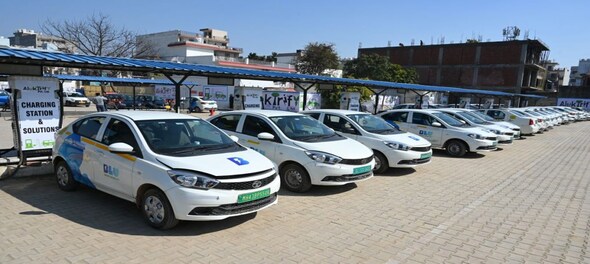
India witnessed remarkable growth in electric vehicle (EV) sales in the past few years, surpassing even the most optimistic projections. However, the country still faces several challenges in developing a robust and reliable charging infrastructure network to support the growing number of EVs on the road.
According to a report by the Confederation of Indian Industry (CII), EV sales accounted for nearly 5 percent of all auto sales in India across categories in 2022, a threefold increase from the previous year. The report, which was done in collaboration with Edelman Global Advisory, said that by 2030, India could sell about 16 million EVs every year.
The report, titled ‘Charging Infrastructure for Electric Vehicle’, is the second in a series of CII reports on ‘Roadmap for Future Mobility 2030’. It highlighted the key drivers and challenges for the development of EV charging infrastructure in India, as well as the policy recommendations and best practices from around the world.
India needs to install more than 400,000 chargers annually till 2030
The report suggests that India should aim for a ratio of one charging station for every 40 EVs, which means installing more than 400,000 chargers annually till 2030. The report also highlighted the opportunity for India’s EV charging equipment and its supply chain is expected to be worth $190 billion by 2030.
However, despite the impressive growth in EV sales, India still faces several challenges in developing a robust and reliable charging infrastructure network. The report identified some of the key barriers such as high upfront cost of chargers, low utilisation rate of chargers, lack of standardisation and interoperability of chargers, regulatory hurdles and land acquisition issues, and inadequate grid integration and renewable energy sourcing.
To overcome these challenges, the report suggested some key recommendations for the government and other stakeholders to accelerate the deployment of charging infrastructure in India. These include:
Consumer choice and government support drive EV uptake
One of the main drivers for EV uptake in India is the increasing consumer choice, which has been facilitated by the government’s push for EVs at both the central and state levels. The report noted that there are more than 50 models of EVs available in India, covering various segments such as two-wheelers (2W), three-wheelers (3W), four-wheelers (4W), buses and trucks.
Also Read: Indian govt seeks Rs 469 cr from 7 electric two-wheeler makers for non-compliance with FAME II
Among these segments, 2W has emerged as the dominant category, accounting for more than 80% of the total EV sales in India. The 2W segment includes scooters and motorcycles, which have seen several new entrants and traditional original equipment manufacturers (OEMs) launching new models. The 3W segment, which mainly comprises commercial passenger and cargo vehicles, is the second largest category, followed by 4W personal vehicles.
The report also revealed that Uttar Pradesh and Maharashtra have the highest number of registered EVs out of the total 21 lakh EVs registered to date in India. These two states have also announced some of the most progressive EV policies in the country, offering various incentives and subsidies for EV buyers and manufacturers.
The report also highlighted the opportunity for India to cater to the global demand for charging stations, which is estimated to be $160 million by 2030. The report said that India has the potential to become a major employment generator and a global supply hub for electric vehicle supply equipment (EVSE) and its supply chain, given its large domestic market and low-cost manufacturing capabilities.
(Edited by : Pradeep John)
Check out our in-depth Market Coverage, Business News & get real-time Stock Market Updates on CNBC-TV18. Also, Watch our channels CNBC-TV18, CNBC Awaaz and CNBC Bajar Live on-the-go!


Rapido offers free rides to voters to polling stations on May 13 in Hyderabad, 3 other cities
May 6, 2024 5:49 PM
Lok Sabha elections 2024: Seats to date, all you need to know about third phase of voting
May 6, 2024 4:49 PM
Concerns on low voter turnout a "myth"; absolute number of voters correct way to analyse: Report
May 6, 2024 2:57 PM
Haryana Lok Sabha elections 2024: A look at JJP candidates
May 6, 2024 2:26 PM

